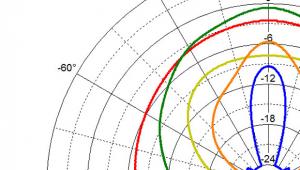The Home Theater PC: A Source to End All Sources Page 2
While you're looking for a DVI-to-HDMI adapter or cable, you'll need a few other things. "Y" cables, with 1/8 stereo plug on one end, and RCA cables on the other, are needed to get the audio from your computer to your receiver. Some new video cards can transmit audio over HDMI, but my older card doesn't, and implementing audio over HDMI in a computer isn't always easy. For now I'll stick with analog, and revisit this issue down the road. I bought 3 sets (5.1 is six channels), for $4.99 each. These are $3.50 each on Monoprice, so I didn't feel too ripped off.
Lastly, you're going to need either some USB extension cables (a few dollars each) or a wireless keyboard and mouse. I don't love wireless mice and keyboards, mostly because their batteries die, always when inconvenient. I used an old Microsoft ergonomic keyboard I had laying around plus a 10-foot USB extension cable. My old wireless mouse had died (shocker), so I bought a mid-priced wireless one while I was at Fry's.
Total price so far: $53.23 including tax. Had I bought everything online, this would have likely been around $30.
Installation
I cleared a space in my rack for the HTPC, and after sliding the case in, I immediately became concerned. Computers - especially gaming computers - generate a lot of heat. There's about 3 inches of space above the case, though the sides are relatively open. As the heat of a computer (or any electronic product) increases, the life of the parts inside decreases. If the heat gets too high, the computer will run poorly, locking up, stuttering, and eventually just shutting down. For now it's ok, but this is something else I'm going to add to our list of things to work on going forward. Maybe a quiet rack fan, or worst case clearing off the top of my rack and placing the PC there.
Hookup was easy, and after assigning the inputs on my receiver, I booted up, fingers crossed. Imagine my dismay when the screen was predominantly pink. This was likely some kind of HDCP issue, meaning my projector didn't like the PC. So I did what all seasoned, trained, experts in the A/V field would do: I unplugged the HDMI cable and plugged it back in again. This solved the problem. What a wonderful digital world we live in. (It seems like this might be an ongoing issue, as when I booted the computer up the next day, it had the same issue. I doubt there's a workaround, but I'll be checking.)
Setup
At this point I was up and running, but there were a few more setup issues to come. PCs output a different gamma than "normal" A/V sources. Gamma is a difficult concept to explain, and though I hate to do it, I'll send you to the Wikipedia page on this, which is actually quite good.
At my projector's default setting (HD), the image looks a little too "contrasty" with shadow areas a little too dark. I'm currently lucky enough to be using a projector with a gamma preset for computers, so problem solved. If yours doesn't, turning up the brightness control a few steps will help, though that doesn't really solve the problem.
Having a 102-inch desktop is awesome. At 10 feet, everything was large enough to be readable, the pixel-perfect detail was superb, and it was novel enough that I'll admit to a bit of a maniacal giggle. I could see a potential problem, though. Sure, most people sit 10 feet away from their TVs - but most don't have 102-inch displays. With a 50-inch or smaller TV, I could imagine text would be very hard to read. Fortunately, Windows lets you adjust its font size. Here's a video that tells you how.
- Log in or register to post comments




































































